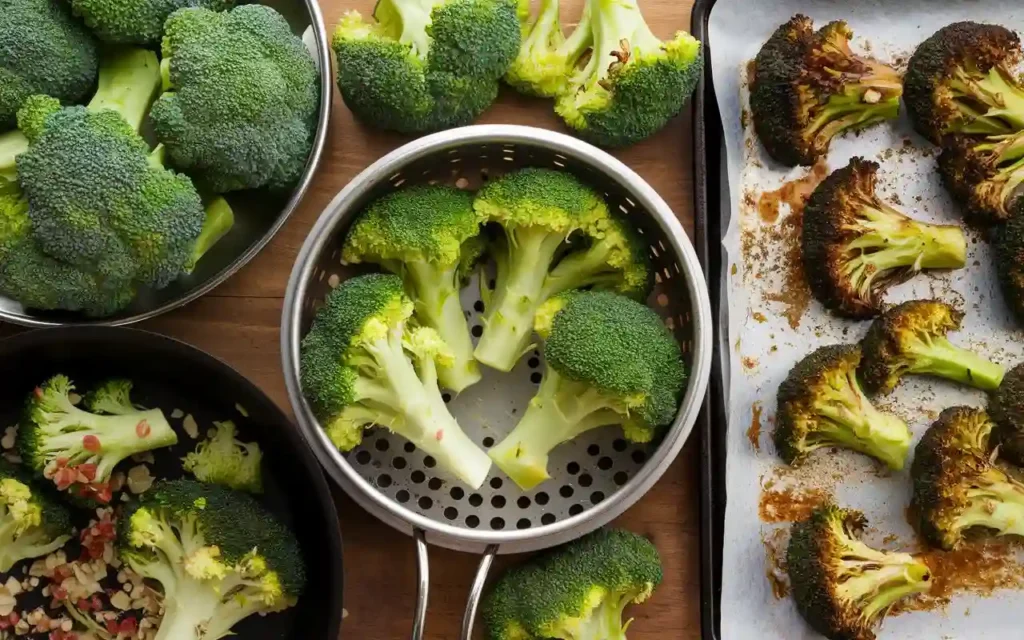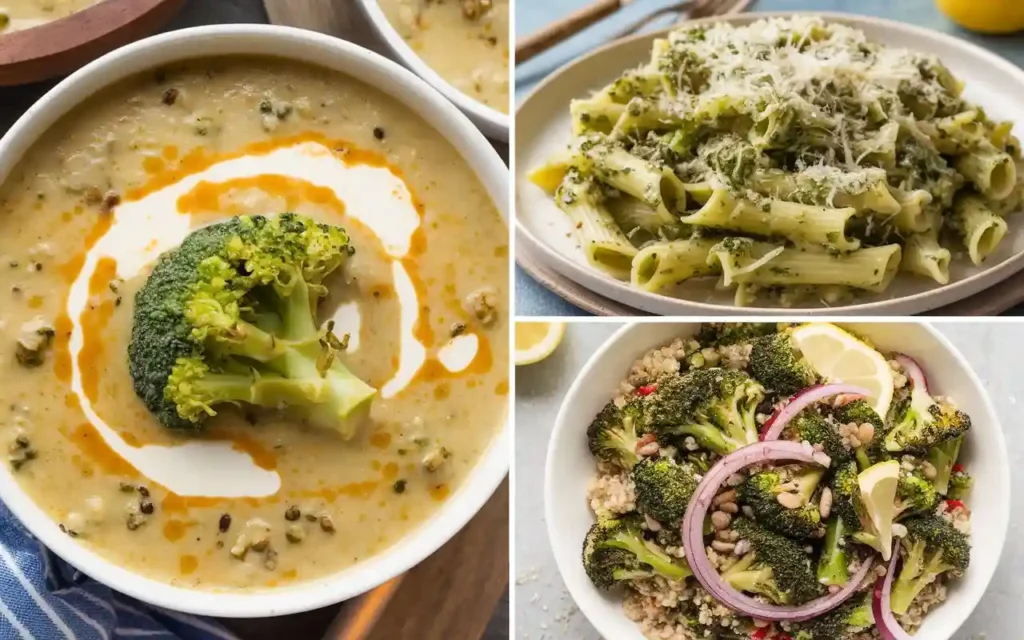How to Make Broccoli Taste Good but Healthy
Table of Contents
- Introduction: The Importance of Making Broccoli Taste Good but Healthy
- Selecting the Freshest Broccoli
- Optimal Cooking Methods for Flavor and Nutrition
- Delicious Seasonings and Spices to Enhance Broccoli
- Incorporating Healthy Fats for Better Taste
- Creative Broccoli Recipes That Are Both Tasty and Healthy
- Broccoli Pairings: Complementary Ingredients to Boost Flavor
- Tips for Storing and Reheating Broccoli
- Overcoming Common Challenges in Cooking Broccoli
- Conclusion: Embracing Broccoli in a Delicious and Healthy Diet
1. Introduction: The Importance of Making Broccoli Taste Good but Healthy
How to make broccoli taste good but healthy is essential because broccoli is a powerhouse vegetable packed with essential nutrients. However, its natural bitterness and strong flavor can be off-putting to some. By learning effective methods to enhance its taste while maintaining its health benefits, you can incorporate this versatile vegetable into your diet more enjoyably.
2. Selecting the Freshest Broccoli

How to make broccoli taste good but healthy starts with selecting the freshest produce. Fresh broccoli has a vibrant green color, firm stalks, and tightly closed florets. Avoid broccoli with yellowing florets or slimy stems, as these are signs of aging and reduced flavor.
2.1. Signs of Fresh Broccoli
- Color: Bright green with a slight purplish tint.
- Texture: Firm stalks and tight florets.
- Aroma: Fresh, mild scent without any sulfurous smell.
2.2. Storage Tips
To maintain freshness, store broccoli in the refrigerator’s crisper drawer. Place it in a perforated plastic bag to allow airflow, which helps prevent moisture buildup and spoilage. Use within 3-5 days for optimal flavor and nutrition.
3. Optimal Cooking Methods for Flavor and Nutrition


How to make broccoli taste good but healthy involves choosing the right cooking methods that preserve its nutrients and enhance its natural flavors. Overcooking can lead to nutrient loss and a mushy texture, while undercooking may leave it too tough.
3.1. Steaming
Steaming broccoli is one of the healthiest cooking methods. It retains most of the vitamins and minerals while softening the texture, making it more palatable. Steam for 5-7 minutes until tender-crisp.
3.2. Roasting
Roasting broccoli at high temperatures caramelizes its natural sugars, resulting in a sweet and nutty flavor. Toss with olive oil, salt, and pepper, then roast at 425°F (220°C) for 20-25 minutes, stirring halfway through.
3.3. Sautéing
Sautéing broccoli with garlic, onions, or other aromatics can infuse it with additional flavors. Use a small amount of healthy oil, such as olive or avocado oil, and cook over medium-high heat until tender.
3.4. Blanching
Blanching involves boiling broccoli briefly and then plunging it into ice water. This method preserves color and texture, making it ideal for salads or as a pre-cooking step for other recipes.
4. Delicious Seasonings and Spices to Enhance Broccoli

How to make broccoli taste good but healthy can be significantly improved by using the right seasonings and spices. These additions can mask bitterness and add depth to the flavor profile.
4.1. Garlic and Onion
Garlic and onion are classic flavor enhancers. Sautéed garlic adds a robust flavor, while caramelized onions contribute sweetness, balancing the broccoli’s natural taste.
4.2. Lemon Juice and Zest
Adding lemon juice or zest brightens the dish, providing a fresh and tangy contrast to the earthy flavor of broccoli.
4.3. Red Pepper Flakes
For those who enjoy a bit of heat, red pepper flakes can add a spicy kick, enhancing the overall taste without overpowering the broccoli.
4.4. Parmesan Cheese
A sprinkle of grated Parmesan cheese introduces a savory and salty element, complementing the vegetable’s flavor while adding a creamy texture.
5. Incorporating Healthy Fats for Better Taste
How to make broccoli taste good but healthy often involves incorporating healthy fats, which can enhance flavor absorption and provide additional health benefits.
5.1. Olive Oil
Extra virgin olive oil is a heart-healthy fat that adds a rich flavor to broccoli. Drizzle it over steamed or roasted broccoli for added taste and moisture.
5.2. Avocado Oil
Avocado oil has a mild flavor and high smoke point, making it suitable for roasting or sautéing broccoli without compromising its health benefits.
5.3. Nuts and Seeds
Adding toasted nuts or seeds, such as almonds, walnuts, or sesame seeds, introduces a crunchy texture and healthy fats, enhancing both flavor and nutritional value.
6. Creative Broccoli Recipes That Are Both Tasty and Healthy

How to make broccoli taste good but healthy is best achieved through diverse and creative recipes that cater to various tastes and dietary preferences. Here are some innovative ideas to get you started.
6.1. Broccoli Pesto Pasta
Blend steamed broccoli with garlic, olive oil, Parmesan cheese, and nuts to create a vibrant pesto sauce. Toss with whole-grain pasta for a nutritious and flavorful meal.
6.2. Cheesy Broccoli Soup
Combine broccoli with low-fat milk, onions, garlic, and a sprinkle of cheddar cheese. Simmer until tender and blend for a creamy, comforting soup that’s both healthy and delicious.
6.3. Roasted Broccoli and Quinoa Salad
Mix roasted broccoli florets with cooked quinoa, cherry tomatoes, cucumbers, and a lemon-tahini dressing. This salad is packed with protein and vibrant flavors.
6.4. Broccoli and Cauliflower Rice Stir-Fry
Use riced broccoli and cauliflower as a base for a low-carb stir-fry. Add your favorite vegetables, lean protein, and a flavorful sauce for a satisfying and healthy dish.
7. Broccoli Pairings: Complementary Ingredients to Boost Flavor
How to make broccoli taste good but healthy can be enhanced by pairing it with ingredients that complement and elevate its natural flavors. Here are some excellent pairings to consider.
7.1. Garlic and Ginger
These aromatic ingredients add depth and complexity to broccoli dishes, making them more flavorful and enticing.
7.2. Lemon and Lime
Citrus fruits provide a tangy contrast that brightens the overall flavor, making broccoli dishes more refreshing.
7.3. Nuts and Seeds
Adding nuts like almonds or seeds like sesame can introduce a delightful crunch and enhance the nutritional profile of your meals.
7.4. Whole Grains
Incorporating whole grains such as quinoa, brown rice, or barley adds substance and makes your broccoli dishes more filling and balanced.
8. Tips for Storing and Reheating Broccoli

How to make broccoli taste good but healthy includes knowing how to properly store and reheat it to maintain its flavor and nutritional value.
8.1. Proper Storage Techniques
Store fresh broccoli in the refrigerator’s crisper drawer, wrapped in a damp paper towel inside a perforated plastic bag. This method keeps it fresh longer by maintaining the right humidity levels.
8.2. Reheating Without Losing Flavor
Reheat broccoli by steaming or sautéing it briefly to avoid overcooking and preserve its texture. Avoid microwaving for extended periods, as it can make the broccoli mushy.
8.3. Freezing Broccoli for Future Use
Blanch broccoli before freezing to preserve its color, texture, and nutrients. Once blanched, cool it in ice water, drain thoroughly, and store in airtight containers or freezer bags.
9. Overcoming Common Challenges in Cooking Broccoli
How to make broccoli taste good but healthy involves addressing common challenges that can make broccoli less appealing. Here are solutions to ensure your broccoli dishes are always delicious.
9.1. Reducing Bitterness
To mitigate broccoli’s natural bitterness, avoid overcooking, use sweet seasonings like honey or maple syrup, and incorporate acidic ingredients like lemon juice or vinegar.
9.2. Enhancing Texture
Maintain broccoli’s crunch by cooking it just until tender-crisp. Pairing it with crispy toppings, such as toasted nuts or breadcrumbs, also enhances the overall texture.
9.3. Masking Strong Flavors
If the strong flavor of broccoli is a barrier, incorporate it into mixed dishes like casseroles, smoothies, or sauces where other ingredients can balance its taste.
10. Conclusion: Embracing Broccoli in a Delicious and Healthy Diet
How to make broccoli taste good but healthy is a valuable skill that can significantly enhance your dietary habits. By selecting fresh broccoli, using optimal cooking methods, incorporating flavorful seasonings, and experimenting with creative recipes, you can transform this nutritious vegetable into a favorite part of your meals. Embrace these techniques to enjoy the health benefits of broccoli without compromising on taste.
References
- Healthline: Benefits of Broccoli
- BBC Good Food: How to Cook Broccoli
- Academy of Nutrition and Dietetics: Health Benefits of Broccoli
- Medical News Today: How to Cook Broccoli




